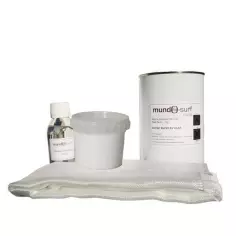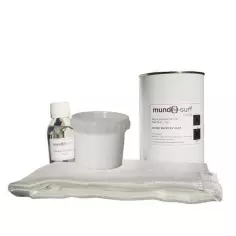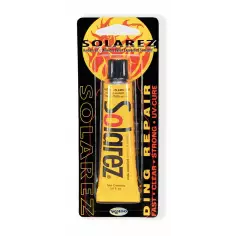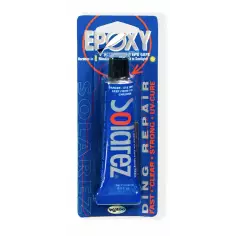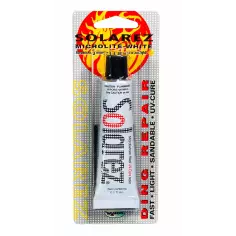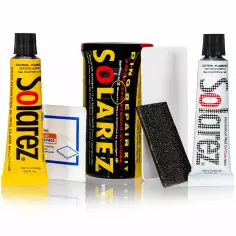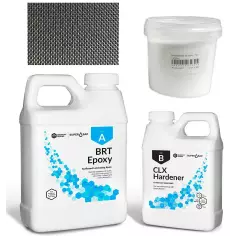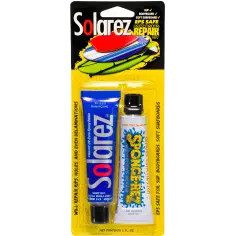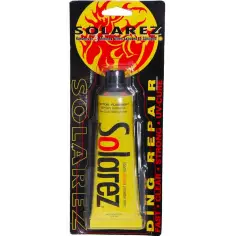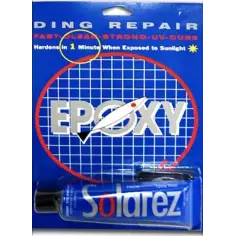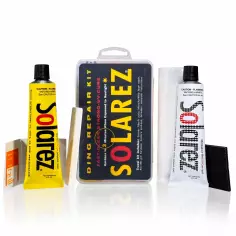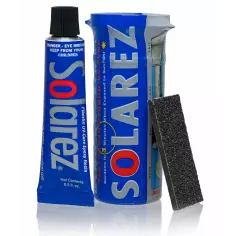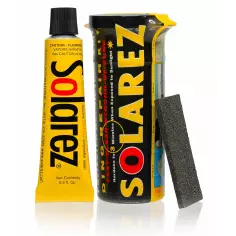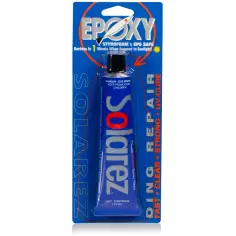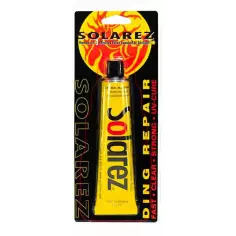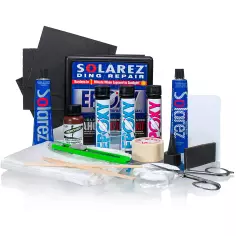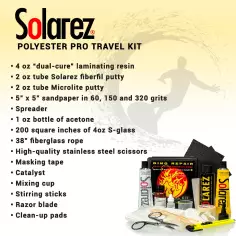One of the most traumatic experiences for a surfer is to get out of the water with his surfboard broken in two parts.
In this article, we will explain in detail why and where a surfboard breaks. We have no miraculous solution, but if you understand it, surely the experience will be less painful.
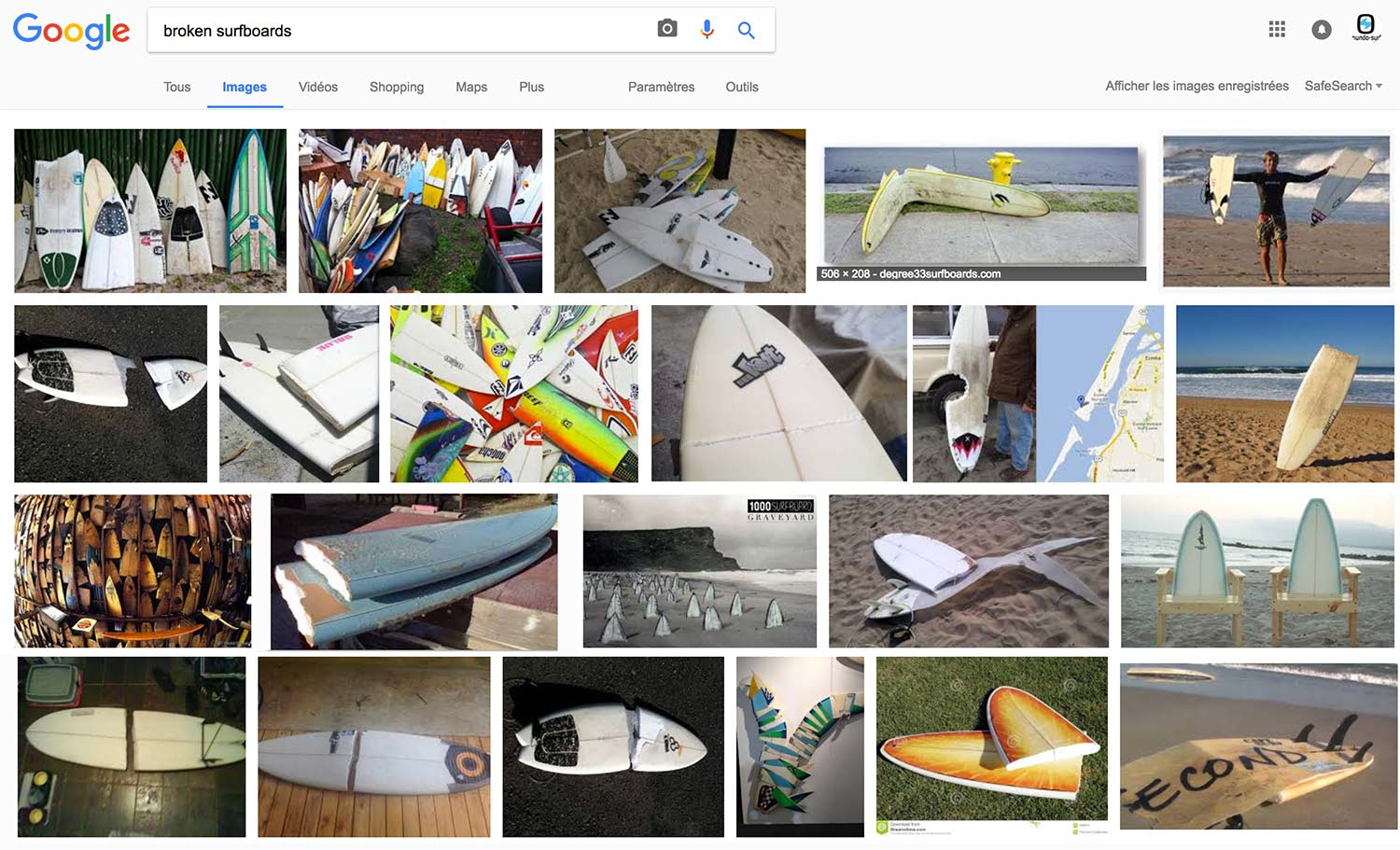
As a result, surfboards are made with two layers of fiberglass on top, one layer on the bottom, and reinforcements on fins and foot spot. The standard of the industry is to use fiberglass of 4Oz of thickness (125 grams per square meter). It offers the best weight / resistance ratio.
However, for funboards and mini malibu, mostly designed for beginners, manufacturers offen use 1 layer of 4Oz + 1 layer of 6Oz in the deck, and a layer of 4Oz in the bottom, since we know that beginners mistreat their surfboards more than an experienced surfer.
Where does a surfboard break in the water?
If you search for "broken surfboards" in google images, you will easily see it:
A surfboard breaks more or less in the middle or in the back third, between the feet of the surfer, or in the nose area. In those areas there is no compression, the break is caused by the lever effect located in the middle of the areas of more compression.
A break in the middle of the board can be caused by two things:
- After a fall, you are swimming next to the board, you are not mounted on it, and the lip of a wave breaks right on the board, splitting it in two.
A good tip to reduce the risk, is to put the bottom up (the side with the fins looking towards the sky), as when it happens, you do not have time to duck dive. Because of the concave shape of the bottom, the board has more resistance placed like this.
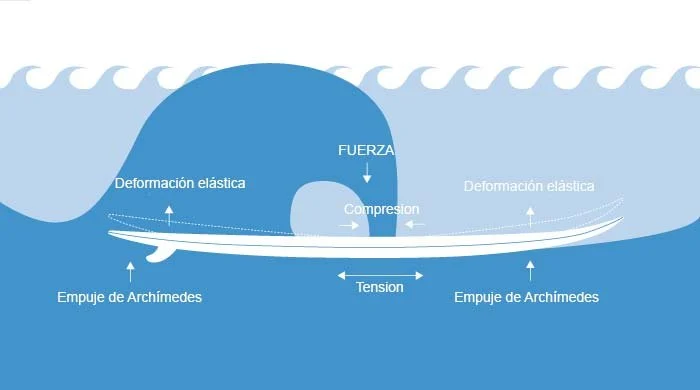
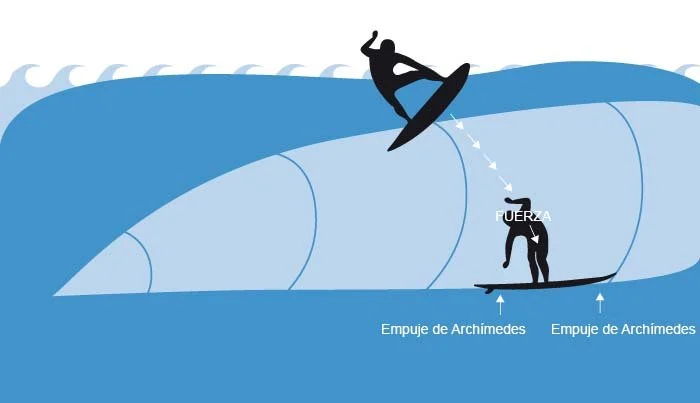
Surfing, after a bad reception of an aerial or a floater, with the feet too close together, the surfboard breaks under the pressure of your body, located in the same area.
In both cases the surfboard will always break more or less in the middle. The first cause of breakage, due to a wave, is the most frequent, since few surfers have the skills to do aerials or floater ...
A break in the nose is caused by a shock of the board against the bottom. It not only occur in reef waves, it can also happen on sandy beaches. The wave of Supertubos, in Portugal, is a good example. A day that works well, you will see several surfers with broken surf oard.
The board will always brake on the nose area, never on the tail, since the board is tied by the leash by the tail of the board.
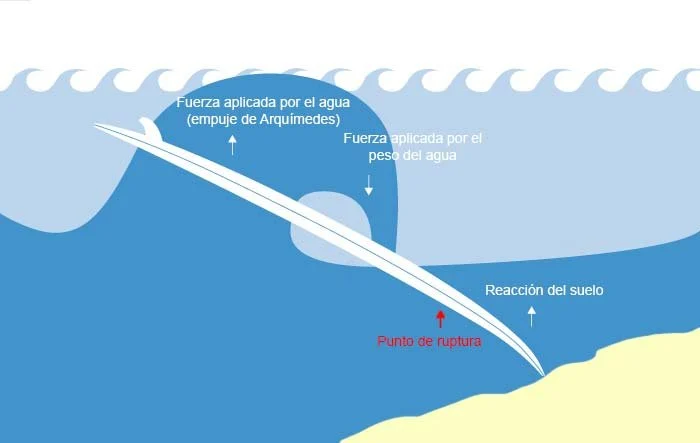
Where does a surfboard break out of the water?
Out of the water, a surfboard can break in another area, caused by an outside force, which can occur due to many circumstances. More common causes are:
- The kid who mounts on dad's board to explain how well he surfs. And since children are very observant, they do it just above the fins. If it is on sand and without a sheath, it is already tested, nothing happens, the board does not break, fins are stuck inside the sand.
- The kid who uses dad´s surfboard as a slider. Kids have a lot of imagination ... With a child of 23 Kg, we have also tried it for you, the board holds without problem.
- The surfboard is stepped by an adult person. We have also tried it for you, with a 60Kg girlfriend who steps on the board resting on the floor, fins up, the fiber cracks but does not break completely.
- The surfboard is stepped on by a car in the parking area of the beach. We have not had the chance to experience it by ourselves, but it's something that happens.
- When closing the trunk of the car, it hits the tail of the board.
- The board is stepped on by a person who intentionally wants to break the surfboard. We have not been protagonist, but it can happen after a conflict in the water.
etc...
This list is not exhaustive, but the force applied to the board must be very important to cause the break, higher than the weight of a child of 30Kg in static, without jumping. Surfboards do not break on their own ...
What solution do you have?
No brand covers the breakage in two of a surfboard as it is not due to a manufacturing defect. A manufacturing defect can be a regression of the blank, gas bubbles, or delimitation of the fiberglasse.
If the board is split at the level of the nose or the tail, an area that is not subjected to stress while surfing, it can be repaired without any problem, and the repair, if it is well made, usually holds up well. If the break is located between the front foot and the back foot of the surfer, it can also be fixed, but it is more risky, the repair can withstand, or not ...
It is also important to keep your surfboard in good condition. Dings and small breaks in the fiber are a place where all tensions end and then break more easily.
In our blog you will find a tutorial that explains in detail how to fix a splitten surfboards. And in our online store, you will find all the materials to fix your surfboards.
We hope that this article has been useful, it will not replace your broken surfboard, but we hope it can alleviate the pain of its owner!
Products you may be interested in:

Sebas
Sebas is the passionate creator and founder of Mundo-Surf, a space dedicated to those who live and breathe surfing. With a deep connection to the ocean and an overflowing passion for every wave, Sebas has turned his love for surfing into a mission: to share, inspire, and educate the community.
In addition to being an avid surfer, Sebas is an expert in surfboard manufacturing, an art that combines technique and creativity. Through his blog, he not only offers guides, reviews, and advice but also shares his experience in surfboard creation, helping others understand the process behind each design and material. At Mundo-Surf, Sebas invites us all to discover surfing at its fullest, from the right equipment to the personalized creation of surfboards.





